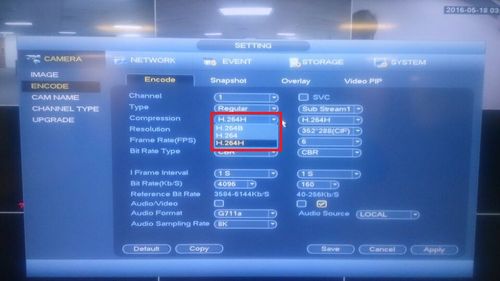Difference between revisions of "Networking/Bandwidth Load and Compression"
| Line 19: | Line 19: | ||
* Video compression are usually H.264B, H.264, H.265H, and H.265. | * Video compression are usually H.264B, H.264, H.265H, and H.265. | ||
* For more information on H.265 vs H.264, visit [[Troubleshoot/H264_vs_H265|here]]. | * For more information on H.265 vs H.264, visit [[Troubleshoot/H264_vs_H265|here]]. | ||
| + | * H.264H use more complex encoding algorithms and will produce better quality video at an equivalent transfer rate. | ||
| + | * Baseline profile is easier to decode, but Main and High profiles offer better compression and therefore use less bandwidth to achieve the same quality stream | ||
[[File:Compression1.jpg|500px]] | [[File:Compression1.jpg|500px]] | ||
[[Category:Troubleshoot]] | [[Category:Troubleshoot]] | ||
Revision as of 22:43, 24 May 2016
Bandwidth, Load, and Compression
Bandwidth
- This is the data transfer rate.
- Usually measured in Mbps(Megabits per second).
Load
- A high load would be compressing H.265 since it is compressing at a harder algorithm.
- H.264b would be low load since it take less CPU power to compress it.
Compression
- Used to reduce storage in hardware.
- Video compression are usually H.264B, H.264, H.265H, and H.265.
- For more information on H.265 vs H.264, visit here.
- H.264H use more complex encoding algorithms and will produce better quality video at an equivalent transfer rate.
- Baseline profile is easier to decode, but Main and High profiles offer better compression and therefore use less bandwidth to achieve the same quality stream


